After our last Face-2-Face session, I thought that I knew exactly what my action plan would be, “How would I re-design my room into a Makerspace/’ but the more I thought about it, the more questions that I had. Some of my questions revolved around assessing and reporting. Right now I assess four learning outcomes for each child in the Junior School and also comment on their strengths and next steps. If I was to really change my program to one that will be enhanced because of the Makerspace, perhaps assessing Integrated Technology as a separate entity is no longer the way to go. I am just beginning to try to get a handle on how creativity and innovation in a Makerspace would?/could?/should? be assessed. Perhaps through Approaches to Learning? We are changing our report card platform next year, so it is a good time to make changes. Still thinking about this!
Something else I started wondering about was how I would get the students and teachers into the Makerspace and what mindshift needs to occur for teachers, parents and students. Students would be the easiest to involve as they are always open to new ways of being creative and innovative. They just need the opportunity. I think that this is actually what my action plan will be about, “How do I create a mindshift within the Junior School around creativity and innovation through the use of a Makerspace?”
The re-design of the classroom, the furniture needs, the tools and supplies required are now all things that I have turned over to a Grade 5 Design Thinking task. The Grade 5 students are working in groups to re-design the room. They are researching furniture, tools, supplies etc. that will be required. When I introduced this task to the students, they were very excited. One of the students kept asking, “For real? We are doing this for real?” The students have just been introduced to Google Apps for Education so they are using shared documents to collaborate. The level of excitement was further increased when I explained that Mr. Michael Ianni- Palarchio, the new Director of Technology, at Branksome Hall, was going to come and teach them how to create a business proposal. I then told the students that each group would decide how to show their Makerspace design (paper, 3D-pen, model etc.) and then present their business plans and designs to the class. Each class would then choose two of the groups to present to the Head of the Junior School, the Director of Technology and the Head of Finance.
I have never seen the students so engaged and excited about a task. During their second work period, there were students measuring, researching sewing machines, researching furniture, looking at how to make a Lego wall, designing on the white board and budgeting their proposed purchases.
I am really looking forward to seeing what the students come up with for the design of the Makerspace as well as seeing what they think is important to have in the space such as 3D printers, sewing machines, Littlebits, Squishy Circuits, Circuit Scribe, Makey Makey etc.
I am planning to read George Couros’ book, The Innovator’s Mindset, over the Christmas holidays as well as a book called, Invent to Learn by Sylvia Libow Martinez and Gary Stager. My next steps are to visit some Makerspaces and to start figuring out the best ways to go about inspiring and encouraging this mindshift within my school..



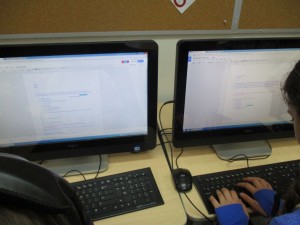
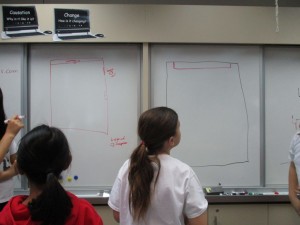
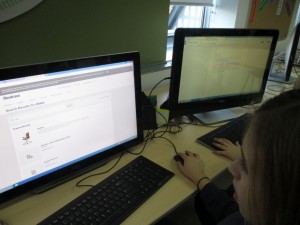
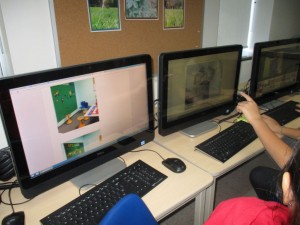


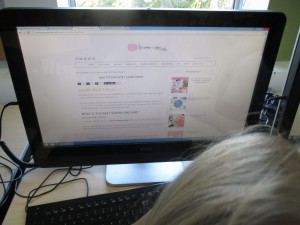
What an exciting post! To me, what I find really amazing is the theme of student engagement. I love the idea of the re-design of your space (and all the great tech integration that can happen), and I’m so impressed with the level of thought and care that goes into the assessment of learning, but what really excites me is to hear how engaged the students are. To me this is the core of what I have tried to do all my career…to find a way to bridge technology and people, to yield value through that bridge and to have people truly engaged.
The process you describe of involving the students in the redesign effort is so awesome. Involving them directly gets them excited about the change (rather than resisting change), brings great new ideas into the process and teaches them valuable skills and thought processes. Thanks so much for inviting me to be a part of the process! I look forward to it. I also look forward to continuing to read your blog now.
Wow Cathy! You should feel really proud of all the great thinking and work you have done already. Truly impressive. Forging ahead I wonder if you might look to the MYP Design cycle to help frame your process. Might as well start using the language they will eventually hear when they enter the middle school. I know @jsmith would be happy 🙂 We are on the same page with the ATLs. I think that spending time assessing ATLs rather than “tech skills” is the way to go. Drilling into each ATL you will find “tech skills” that enable them but they will change depending on the task. Staying at the ATL level lets you plug in different tech skills to meet the outcomes but keeps you nimble to offer choice and adapt to new tools as they come in. @gnichols Is doing some amazing things with his school maker space. Looping him in here…….
#welldone
J
Thanks for your comments, Justin! I am using the MYP Design Cycle but I am using a simplified older version that works better for the age group that I am working with. The design cycle is on the booklets that the students are completing and we are using the same language with all of the students.
As an Art teacher I’m super excited about this idea of maker spaces, such an interesting notion, and I can see many interconnections to an art studio space. I wonder what are all the similarities? I wonder if this is not a natural extension of an art room? What are all the ways that these could be made to interconnect?
Thank you for reflecting so deeply about how you might enhance technology learning in the Junior School. I believe starting with assessment is key to success in improving our approach as it helps to frame the backwards planning process. If we do not know how we will assess, evaluate and report on student learning, we cannot plan the learning engagements effectively. I love how you are seeing technology and design thinking learning goals as part of the IB Approaches to Learning. They are definitely the skills that have been selected to highlight 21st Century needs and are intended to grow as our needs change. I know that our approach to assessing the Approaches to Learning will continue to evolve over time. I like the idea of exploring how technology and design thinking skills fit into the bigger learning picture, rather than reporting on them separately. I look forward to further professional conversation about this as we continue to refine our approach to assessment, evaluation and reporting.
I also believe student engagement is one of the key indicators of a successful curriculum – written, instructional (taught) and assessed/evaluated. If students are engaged, learning is more likely to be in depth and of high quality. It is great to see how you are posing real life performance tasks to students like you did with the Grade 5s with the room design challenge. A real life context provides learners with a unique opportunity to feel empowered by their contribution and motivates them as they feel important and empowered!
You have an active inquiry on the go! I really connect with your questions to do with is it a stand-alone subject and assessed and evaluated separately, or could it be integrated fully in to the program of inquiry? This reminds me of a school that presented at an IB conference. It is a PYP and STEM school. Wow! I wonder how they write, teach and assess the curricula?
This sounds like a dream classroom, and your thinking in advance about the appropriate ways to assess the desired outcomes is impressive. How have the books you read over the break affected your thinking? I look forward to seeing pictures of some of the tangible results!!
Nicely done Cathy! What an incredible way to get at creative solutions and empower your girls in driving the learning! The big question is assessment for most things and deciding what’s important for learning.
How did you like George Couros’ book? It’s definitely on my read list – I really enjoy what he puts out on Twitter!
@jmedved & @gnichols have Maker Spaces in their schools and would be great resources to chat with around this.
Looking forward to hearing more about your journey!
Yes you can definitely come by the York School to check out our Design lab anytime!